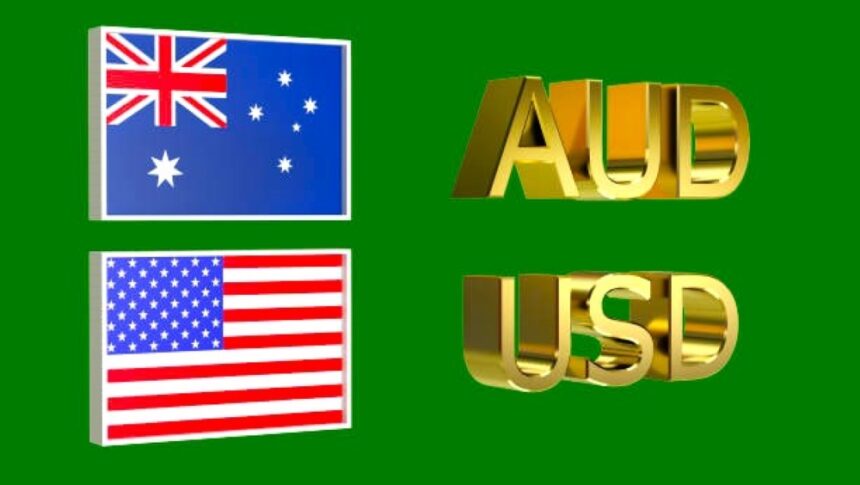Australian Dollar Hits Six-Month Highs as Washington Faces Budget Blowback.
The Australian Dollar (AUD) remains resilient at the start of the trading week, buoyed by broad-based weakness in the US Dollar (USD) and rising investor interest in risk-linked assets. On Monday, the AUD/USD pair touched fresh six-month highs, driven by mounting concerns over the US fiscal position, political uncertainty surrounding Trump’s new spending bill, and dovish hints from the Federal Reserve.
While the AUD has been under some pressure following the Reserve Bank of Australia’s (RBA) recent rate cut, it continues to draw strength from broader macroeconomic dynamics, including improving trade sentiment and geopolitical tensions that have kept markets on edge.
USD on the Defensive Amid Mounting Deficit Woes
The US Dollar Index (DXY), which measures the greenback against six major currencies, slipped further on Monday to hover near 98.70, deepening recent losses. Investors have grown increasingly wary of the United States’ rising fiscal burden, particularly following former President Donald Trump’s renewed push for his so-called “One Big Beautiful Bill.”
According to the Congressional Budget Office (CBO), this proposed legislation would deliver a $3.8 billion deficit blow through measures including tax breaks on tipped wages and US-manufactured vehicle loans. These initiatives, while politically appealing, have raised eyebrows among fiscal conservatives and bond market watchers who worry about prolonged upward pressure on US Treasury yields.
This potential rise in bond yields would increase borrowing costs for consumers, corporations, and the government, thereby undermining growth and increasing the risk of stagflation—a scenario where inflation remains elevated while growth slows.
US Credit Rating Downgrade Adds to Dollar’s Woes
The bearish sentiment surrounding the USD was further intensified by Moody’s Investor Service’s recent downgrade of the US long-term credit rating, from Aaa to Aa1. The move reflects a broader trend among credit rating agencies, with Fitch and Standard & Poor’s having issued similar downgrades in 2023 and 2011, respectively.
Moody’s now projects US federal debt to rise to 134% of GDP by 2035, up from 98% in 2023. The forecasted budget deficit of nearly 9% of GDP paints a troubling picture. Rising entitlement program costs, declining tax revenues, and mounting interest payments on existing debt are all contributing to what analysts are calling a “fiscal cliff.”
This downgrade has led to a flight away from the greenback, particularly among foreign investors wary of holding long-term US debt at current yield levels. The result? A weaker USD, stronger competing currencies—and among the biggest beneficiaries is the Australian Dollar.
RBA’s Rate Cut Dims Some Shine from the Australain Dollar
Despite its recent strength, the Aussie Dollar’s rally faces domestic headwinds. The Reserve Bank of Australia (RBA) slashed its benchmark interest rate by 25 basis points last week, in a move widely anticipated by markets. However, what caught traders’ attention was Governor Michele Bullock’s post-meeting remarks, signaling the RBA remains ready to take further easing action if necessary.
This dovish bias could weigh on the AUD in the medium term, especially if upcoming Australian economic data disappoints. However, for now, the AUD/USD pair remains supported by external tailwinds—chief among them being US Dollar weakness and improving global risk sentiment.
Australia Navigates Diplomatic Tightrope
The 90-day US-China trade truce has reinvigorated hopes for broader global trade stabilization. As China is Australia’s largest trading partner, any improvement in US-China relations tends to benefit the Aussie. However, Australia’s own bilateral ties with China have come under renewed strain following Canberra’s move to cancel the 99-year Darwin Port lease granted to China’s Landbridge Group.
The Chinese embassy has labeled the decision “unfair and unethical”, fueling fears of economic retaliation. Traders will be closely watching Beijing’s next move, as retaliatory trade restrictions could affect Australia’s iron ore and coal exports—two major pillars of its foreign trade income.
Despite these tensions, markets appear to be pricing in a favorable risk-reward scenario for the AUD, buoyed by the assumption that trade diplomacy will ultimately prevail, especially given China’s dependence on Australian raw materials.
Interest Rate Outlook Hinges on Hard Data and Tariff Effects
Adding another layer of complexity to the USD’s downward slide are the mixed signals from Federal Reserve officials.
- Chicago Fed President Austan Goolsbee remarked on Friday that Trump’s tariff threats are likely to delay any immediate interest rate action, suggesting that the Fed may adopt a wait-and-see approach.
- Kansas City Fed President Jeffrey Schmid emphasized the need to rely on “hard data rather than soft sentiment indicators,” indicating that consumer spending, labor market conditions, and inflation readings will drive future rate decisions.
- Fed Governor Christopher Waller also chimed in, stating that if new tariffs remain around 10%, the economy may still perform well enough to justify a rate cut later this year. These dovish undertones have added pressure to an already fragile USD.
With the Fed appearing less hawkish and inflation data showing signs of stabilization, rate-cut bets have resurfaced, weakening the USD further and allowing higher-yielding currencies like the AUD to capitalize.
Eyes on RBA Forward Guidance and US Fiscal Developments
Looking ahead, traders will be monitoring several key catalysts that could determine the AUDUSD pair’s direction:
- Australia-China Relations: Any further escalation regarding the Darwin Port issue could trigger risk-off flows and weigh on the Aussie.
- US Fiscal Debates: The fate of Trump’s spending bill in the Senate will be pivotal. If passed, markets may price in more US debt issuance, keeping bond yields elevated and the USD under pressure.
- RBA Policy Signals: Traders will be watching for signs that the RBA is becoming more aggressive in its dovish stance. If the central bank hints at additional cuts, the AUD may lose ground despite global tailwinds.
- US Data Releases: Key economic indicators, including inflation, jobs, and manufacturing data, will influence the Fed’s tone and the USD’s strength or weakness over the coming weeks.
Conclusion: Australian Dollar in the Driver’s Seat for Now
The Australian Dollar continues to outperform its American counterpart, powered by risk-on sentiment, fading Fed hawkishness, and fears surrounding US fiscal sustainability. However, the path forward may be bumpy. The RBA’s dovish bias, diplomatic rifts with China, and ongoing volatility in US political and economic policy mean AUDUSD traders must remain vigilant.
Still, in the short term, with the US Dollar weighed down by ballooning deficits, downgraded credit ratings, and unpredictable policy shifts, the Aussie has room to extend its gains—unless domestic headwinds start to dominate.
[faq-schema id=”39666″]









